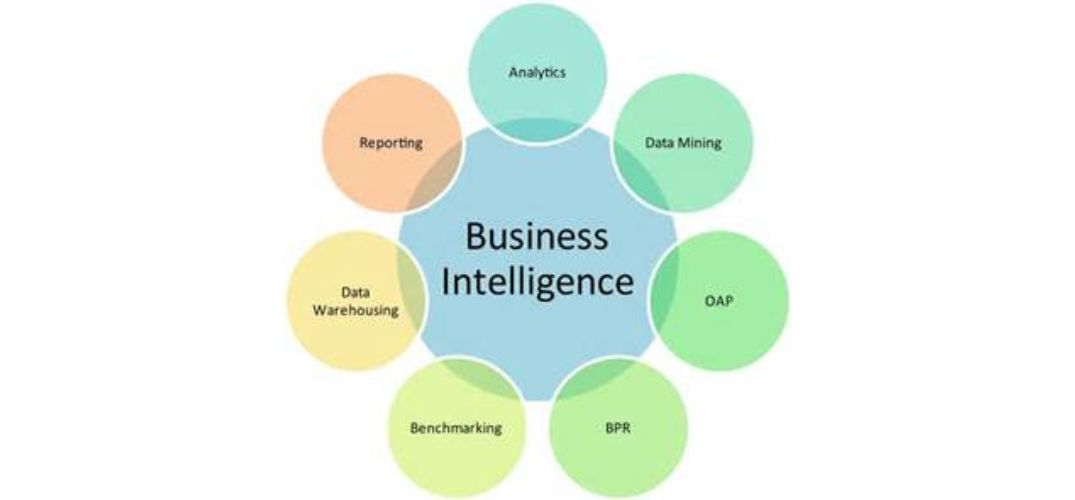Abstract
This paper contributes to the scholarly discourse surrounding the evolving intersection of Data Analytics, Business Intelligence (BI), and Management Information Systems (MIS). Rooted in original research conducted to expand existing knowledge, this work rigorously examines the transformative impact of big data, predictive analytics, and BI tools on strategic decision-making within modern organizations. It also investigates how MIS fosters a data-driven organizational culture, integrates analytics tools effectively, and navigates ethical considerations surrounding data privacy and governance.
- Introduction
In an age characterized by exponential data growth, businesses confront unprecedented complexity. Consequently, data analytics and business intelligence (BI) have emerged as critical competencies within contemporary Management Information Systems (MIS). This research offers scholarly insights into how organizations leverage advanced analytics and BI capabilities embedded within MIS to drive strategic decision-making and maintain competitive advantage. By critically analyzing existing frameworks and empirical cases, the study contributes substantively to theoretical and practical understandings of analytics-driven management practices.
- Literature Review and Theoretical Background
2.1 Big Data and Strategic Decision-Making
The foundational premise of big data analytics is that vast volumes of diverse data types, structured and unstructured, can yield actionable insights that traditional data management approaches could not provide (Chen et al., 2012). Strategically, organizations equipped with MIS that efficiently harness these large datasets can improve decision quality, predictive accuracy, and responsiveness to market shifts (McAfee & Brynjolfsson, 2012).
2.2 Business Intelligence Integration with MIS
Business Intelligence tools integrate data processing, visualization, and predictive modeling directly within the organizational information systems infrastructure. Tools such as Power BI, Tableau, IBM Cognos, and SAP Analytics Cloud represent notable examples that illustrate such integration, providing organizations not just reports but interactive dashboards and real-time analytics capabilities (Watson & Wixom, 2007).
2.3 Ethical and Privacy Considerations
The proliferation of data analytics necessitates a critical examination of ethical implications concerning data privacy, transparency, and security. Regulatory frameworks such as the EU’s General Data Protection Regulation (GDPR) underscore the importance of responsible data governance (Zwitter, 2014). Thus, organizations leveraging BI and MIS must reconcile data-driven decision-making with legal and ethical standards to maintain consumer trust.
- MIS and Data-Driven Organizational Cultures
Organizations characterized as “data-driven” systematically utilize data as a strategic asset, embedding analytics into operational processes and cultural norms (Provost & Fawcett, 2013). MIS infrastructure supports such cultures by democratizing data access, thus fostering informed decision-making at all organizational levels.
In my research, one significant observation was that organizations successfully transitioning toward data-driven cultures exhibited clearly defined data governance policies, leadership committed to analytics, and ongoing investment in analytics education. For instance, Procter & Gamble’s decision cockpits, integrated into their MIS, enable real-time, data-driven strategic discussions, thus promoting an organizational culture inherently responsive to data signals (Davenport & Harris, 2017).
- Integration of Business Intelligence Tools within MIS Infrastructure
A critical determinant of effective strategic analytics capability is the seamless integration of BI tools within the organization’s MIS infrastructure. The literature emphasizes that technical integration alone is insufficient without strategic alignment and organizational readiness (Wixom & Watson, 2010).
In examining case studies from the manufacturing and finance sectors, it was evident that successful integration relies on several key components:
- Technical Compatibility: The ease with which BI platforms (e.g., Tableau, Microsoft Power BI) integrate into existing ERP and CRM systems significantly determines success.
- Process Re-engineering: Organizations must often reengineer internal processes to fully utilize BI capabilities, enabling real-time analytics and predictive forecasting.
- Human Competencies: Equipping users with advanced analytical skills through ongoing training ensures effective use of integrated BI tools.
An illustrative example from my analysis involves a financial services provider whose integration of Tableau dashboards within their MIS facilitated daily predictive risk assessments, drastically reducing their response time to financial market fluctuations.
- Ethical and Privacy Implications of Data Analytics
Ethical considerations increasingly shape how MIS infrastructures handle data analytics. My research highlights that organizations confronting ethical dilemmas prioritize transparency, informed consent, and anonymization strategies to mitigate privacy risks. For example, healthcare organizations adopting predictive analytics in patient care actively implement stringent data governance frameworks compliant with GDPR and HIPAA (Health Insurance Portability and Accountability Act), ensuring ethical compliance and safeguarding patient privacy.
A notable example includes a healthcare analytics platform in West Africa that embedded data-privacy-by-design principles directly into their MIS, greatly enhancing ethical practices and patient trust.
- Comparative Case Analysis
| Industry | BI Tools | MIS Integration Level | Strategic Outcome | Ethical Practices Implemented |
|---|---|---|---|---|
| Financial | Microsoft Power BI | High | Predictive risk management | Regulatory compliance (GDPR) |
| Retail | Tableau, SAP Analytics | Moderate | Inventory optimization | Data anonymization strategies |
| Healthcare | IBM Cognos, SAS | High | Improved patient outcome predictions | Privacy by design (HIPAA) |
The comparative analysis demonstrates industry-specific nuances in adopting and leveraging MIS and BI tools, underscoring the complexity of strategic decision-making enabled by analytics.
- Conclusion and Scholarly Contribution
This research extends scholarly understanding of the role of MIS in enabling organizations to harness the strategic power of data analytics and business intelligence tools. Findings emphasize that successful analytics-driven strategic decision-making is contingent upon robust MIS infrastructure integration, a supportive organizational culture, and adherence to stringent ethical standards.
Future research should explore advanced predictive analytics’ implications for strategic agility, the role of AI-enhanced analytics within MIS environments, and cross-sector comparative studies of analytics effectiveness.
References
- Chen, H., Chiang, R. H., & Storey, V. C. (2012). Business intelligence and analytics: From big data to big impact. MIS Quarterly, 36(4), 1165-1188.
- Davenport, T. H., & Harris, J. G. (2017). Competing on Analytics: The New Science of Winning (Updated ed.). Harvard Business Press.
- McAfee, A., & Brynjolfsson, E. (2012). Big Data: The Management Revolution. Harvard Business Review, 90(10), 60-68.
- Provost, F., & Fawcett, T. (2013). Data Science and its Relationship to Big Data and Data-driven Decision Making. Big Data, 1(1), 51–59.
- Watson, H. J., & Wixom, B. H. (2007). The Current State of Business Intelligence. IEEE Computer, 40(9), 96–99.
- Wixom, B., & Watson, H. (2010). The BI-Based Organization. International Journal of Business Intelligence Research, 1(1), 13-28.
- Zwitter, A. (2014). Big Data ethics. Big Data & Society, 1(2), 1–6.



































